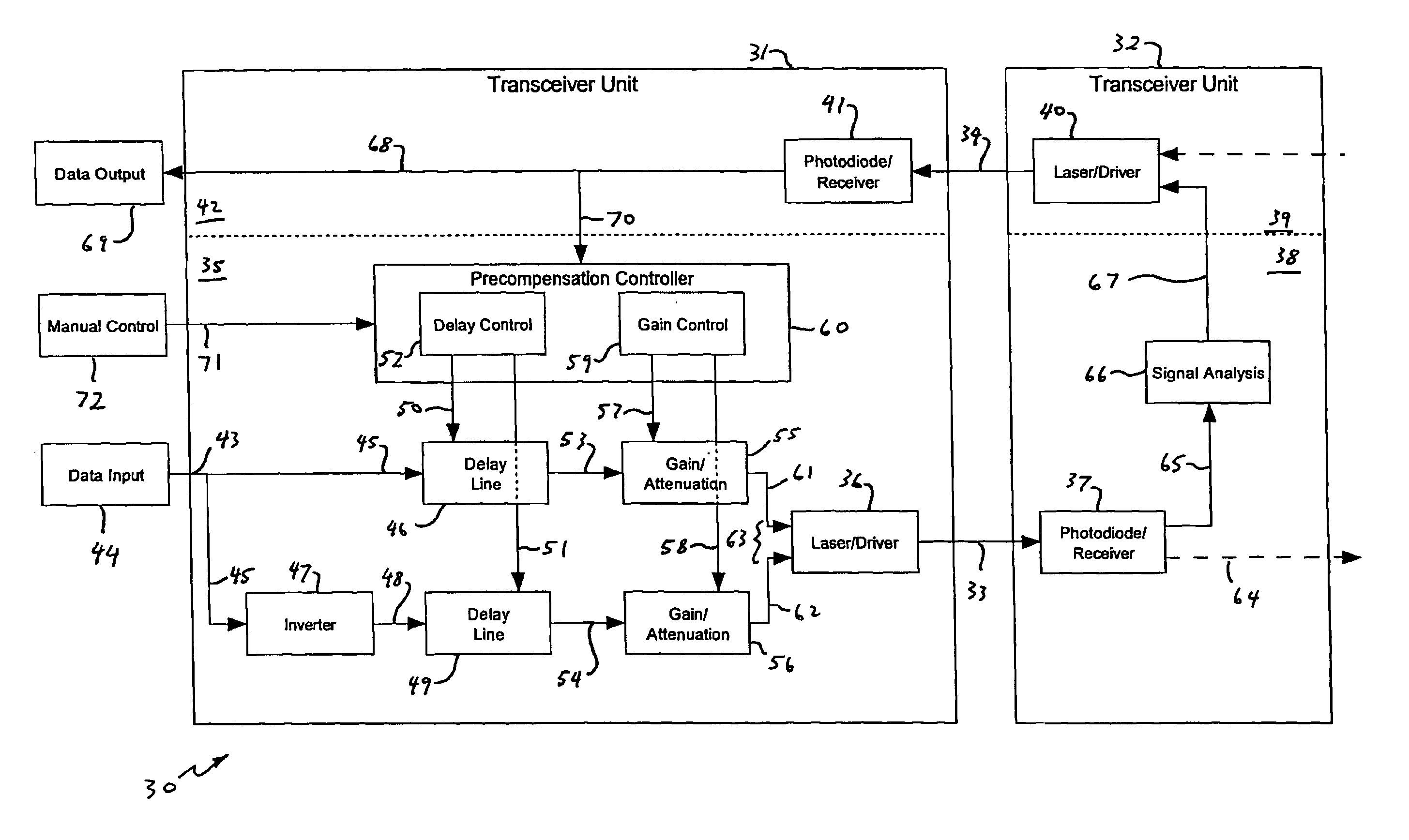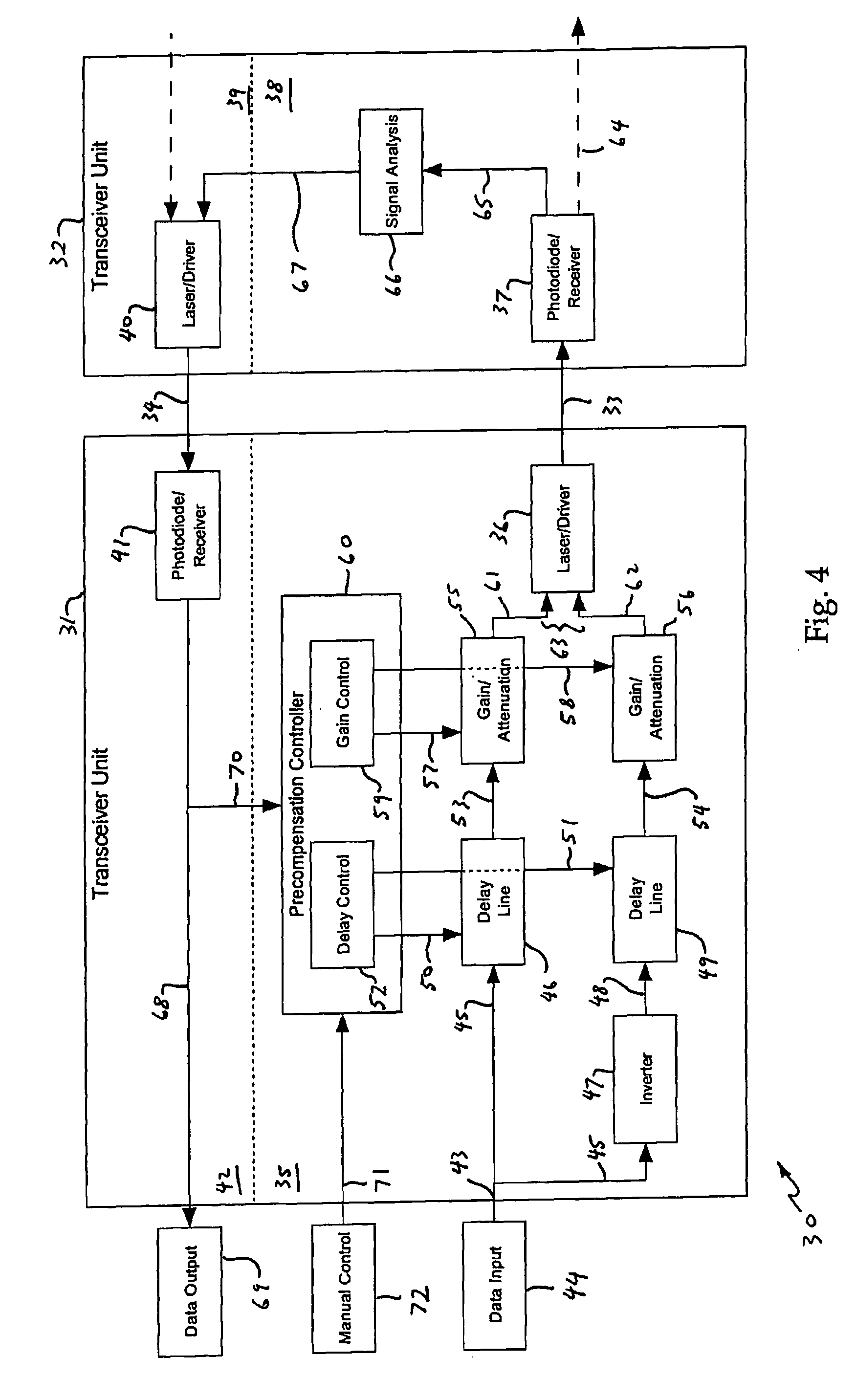Multimode optical fibre communication system
- Summary
- Abstract
- Description
- Claims
- Application Information
AI Technical Summary
Benefits of technology
Problems solved by technology
Method used
Image
Examples
Embodiment Construction
[0039]FIG. 1 illustrates one example of how an optical pulse 1 can become degraded during a transmission through a multimode optical fibre. The horizontal axis represents either time or distance along the length of the fibre and the vertical axis is the intensity of the transmitted optical radiation. There will, however, be considerable variability in the particular form of pulse distortion in a multimode optical fibre link, depending on a number of factors such as the type and length of the optical fibre.
[0040] Initially, the pulse 1 is narrow having a sharp rising edge 2 and a similarly sharp falling edge 3. As the pulse is transmitted along the length of the fibre, different modes travel at different speeds. The result is that the received pulse will be spread out, mainly along a trailing edge 4. The intensity of the received pulse will also drop somewhat, although in FIG. 1 the peak transmitted and received intensities are shown as being the same so that the change in shape of ...
PUM
 Login to View More
Login to View More Abstract
Description
Claims
Application Information
 Login to View More
Login to View More - R&D
- Intellectual Property
- Life Sciences
- Materials
- Tech Scout
- Unparalleled Data Quality
- Higher Quality Content
- 60% Fewer Hallucinations
Browse by: Latest US Patents, China's latest patents, Technical Efficacy Thesaurus, Application Domain, Technology Topic, Popular Technical Reports.
© 2025 PatSnap. All rights reserved.Legal|Privacy policy|Modern Slavery Act Transparency Statement|Sitemap|About US| Contact US: help@patsnap.com



